Highly Integrated Resonant Tunneling Diode with Rectangular Waveguide Output for W-Band Communication System
Abstract
1. Introduction
2. CPW—Waveguide Transformer Design
2.1. Transformer Structure Design
2.2. Simulated and Measured Results
3. Package and Measurement of RTD
4. System Demonstration
5. Conclusions
Author Contributions
Funding
Acknowledgments
Conflicts of Interest
References
- Yu, X.; Asif, R.; Piels, M.; Zibar, D.; Galili, M.; Morioka, T.; Jepsen, P.U. 400-GHz wireless transmission of 60-Gb/s Nyquist-QPSK signals using UTC-PD and heterodyne mixer. IEEE Trans. Terahertz Sci. Technol. 2016, 6, 765–770. [Google Scholar] [CrossRef]
- Jia, S.; Pang, X.; Ozolins, O.; Yu, X.; Hu, H.; Yu, J.; Guan, P.; Da Ros, F.; Popov, S.; Jacobsen, G.; et al. 0.4 THz photonic-wireless link with 106 Gb/s single channel bitrate. J. Lightwave Technol. 2018, 36, 610–616. [Google Scholar] [CrossRef]
- Koenig, S.; Lopez-Diaz, D.; Antes, J. Wireless sub-THz communication system with high data rate. Nat. Photonics 2013, 7, 977–981. [Google Scholar] [CrossRef]
- Wu, Q.; Lin, C.; Lu, B.; Miao, L.; Hao, X.; Wang, Z.; Jiang, Y.; Lei, W.; Den, X.; Chen, H.; et al. A 21 km 5 Gbps real time wireless communication system at 0.14 THz. In Proceedings of the International Conference on Infrared, Millimeter, and Terahertz Waves, Cancun, Quintana Roo, Mexico, 27 August–1 September 2017. [Google Scholar]
- Wang, C.; Lu, B.; Lin, C.; Chen, Q.; Miao, L.; Deng, X.; Zhang, J. 0.34-THz wireless link based on high-order modulation for future wireless local area network applications. IEEE Trans. Terahertz Sci. Technol. 2014, 1, 75–85. [Google Scholar] [CrossRef]
- Li, X.; Yu, J.; Wang, K. Delivery of 54-Gbps 8QAM W-Band signal and 32-Gbps 16QAM K-Band signal over 20-km SMF-28 and 2500-m wireless distance. J. Lightwave Technol. 2017, 36, 610–616. [Google Scholar]
- Li, X.; Yu, J.; Zhao, L.; Wang, K.; Wang, C.; Zhao, M.; Zhou, W.; Xiao, J. 1-Tb/s Millimeter-Wave Signal Wireless Delivery at D-Band. J. Lightwave Technol. 2019, 37, 196–203. [Google Scholar] [CrossRef]
- Webber, J.; Nishigami, N.; Kim, J.-Y. Terahertz wireless communications using resonant tunnelling diodes with radio-over-fibre. Electron. Lett. 2019, 55, 949–951. [Google Scholar] [CrossRef]
- Ishigaki, K.; Shiraishi, M.; Suzuki, S. Direct intensity modulation and wireless data transmission characteristics of terahertz-oscillating resonant tunnelling diodes. Electron. Lett. 2012, 48, 582–583. [Google Scholar] [CrossRef]
- Diebold, S.; Nishio, K.; Nishida, Y. High-speed error-free wireless data transmission using a terahertz resonant tunnelling diode transmitter and receiver. Electron. Lett. 2016, 52, 1999–2001. [Google Scholar] [CrossRef]
- Oshima, N.; Hashimoto, K.; Suzuki, S. Wireless data transmission of 34 Gbit/s at a 500-GHz range using resonant-tunnelling-diode terahertz oscillator. Electron. Lett. 2016, 52, 1897–1898. [Google Scholar] [CrossRef]
- Park, J.; Lee, J.; Yang, K. A 24-GHz low-power RTD-based on–ogg keying oscillator with a RTD pair configuration. IEEE Microw. Wirel. Compon. Lett. 2018, 28, 521–523. [Google Scholar] [CrossRef]
- Oshima, N.; Hashimoto, K.; Suzuki, S.; Asada, M. Terahertz wireless data transmission with frequency and polarization division multiplexing using resonant-tunneling-diode oscillators. IEEE Trans. Terahertz Sci. Technol. 2017, 7, 593–598. [Google Scholar] [CrossRef]
- Wang, J.; Al-Khalidi, A.; Wang, L.Q.; Morariu, R. 15-Gb/s 50-cm wireless link using a high-power compact III–V 84-GHz transmitter. IEEE Trans. Microw. Theory Tech. 2018, 66, 4698–4705. [Google Scholar]
- Wang, J.; Wang, L.; Li, C. 28 GHz MMIC resonant tunnelling diode oscillator of around 1mW output power. Electron. Lett. 2013, 49, 816–818. [Google Scholar] [CrossRef]
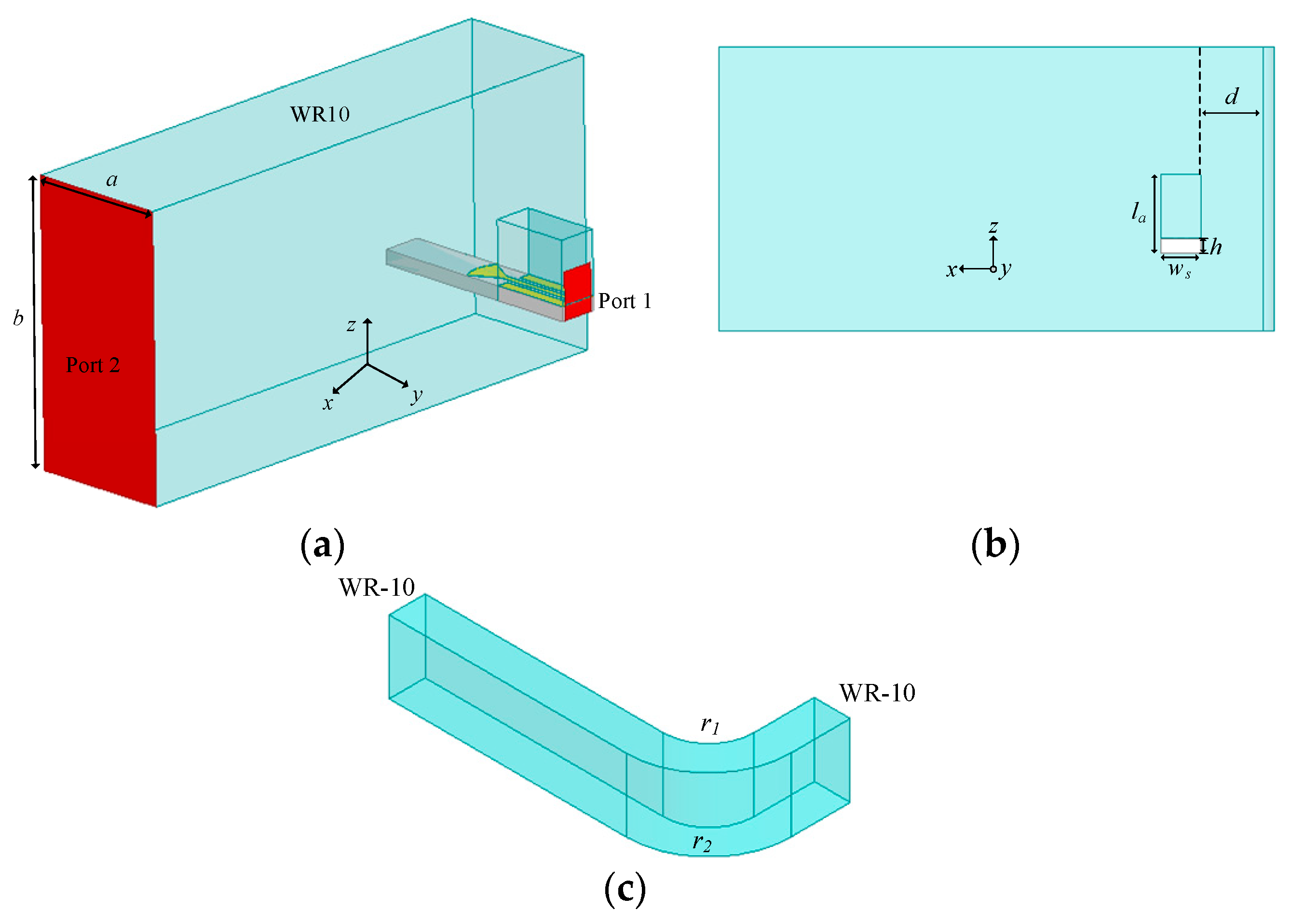


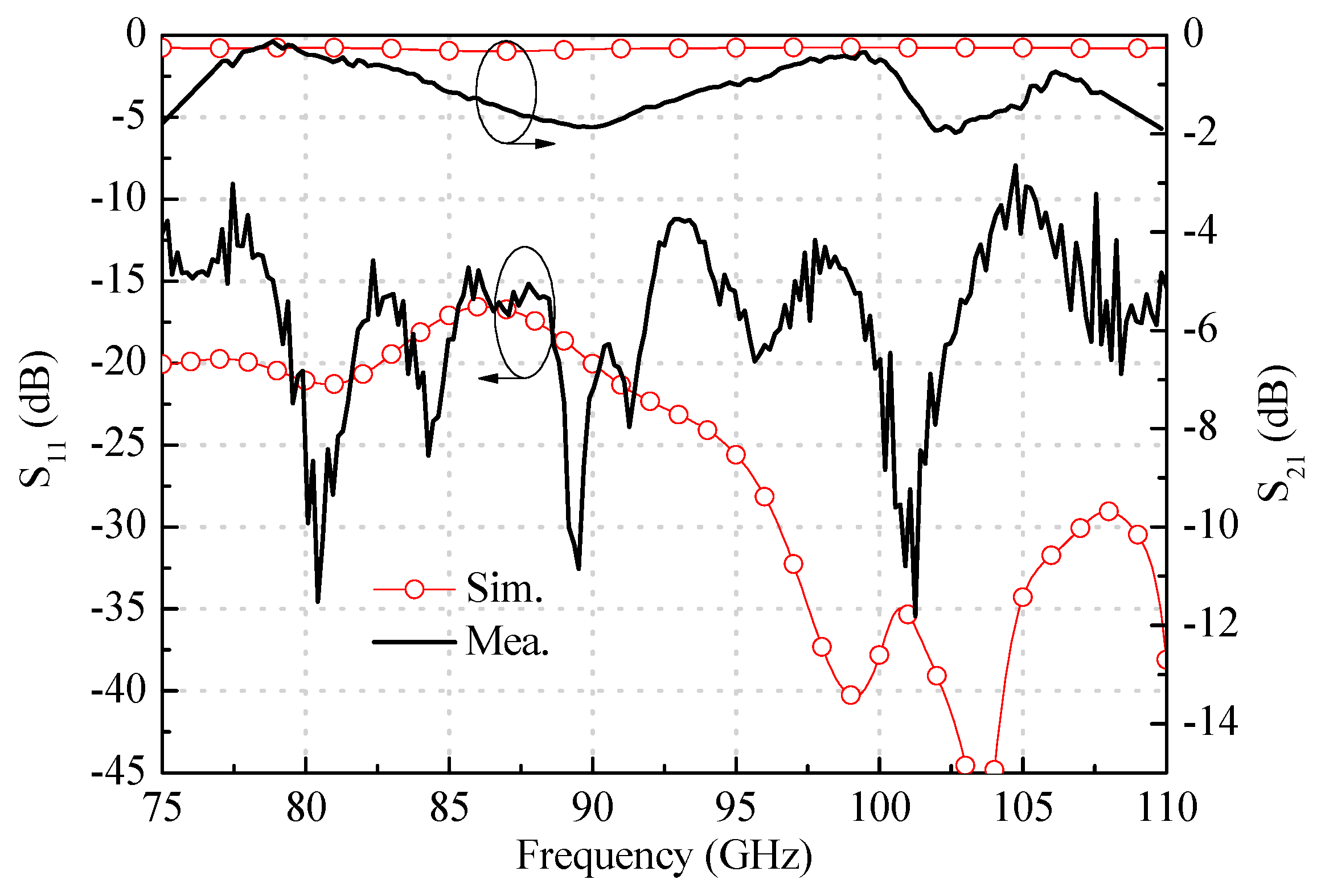
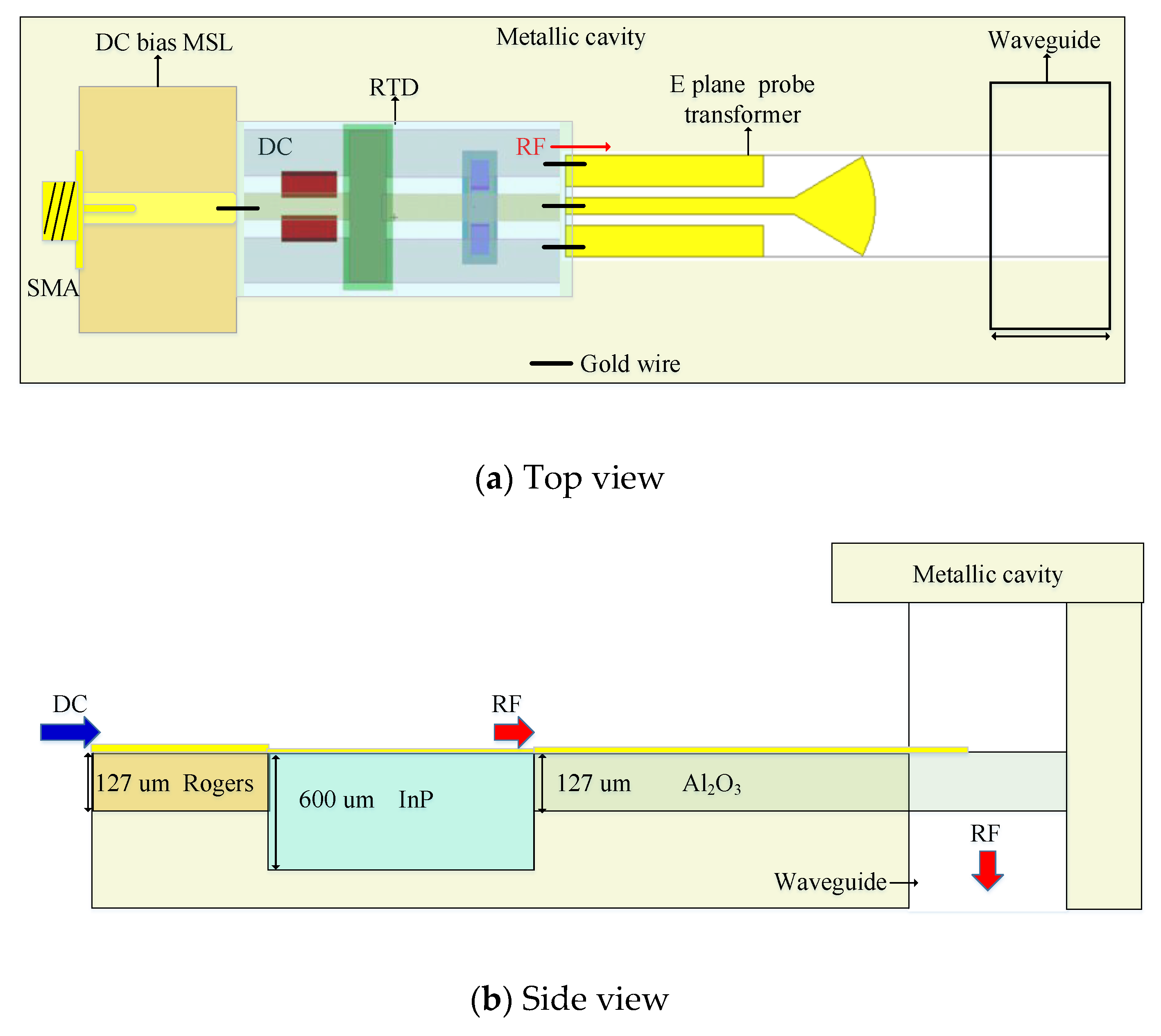
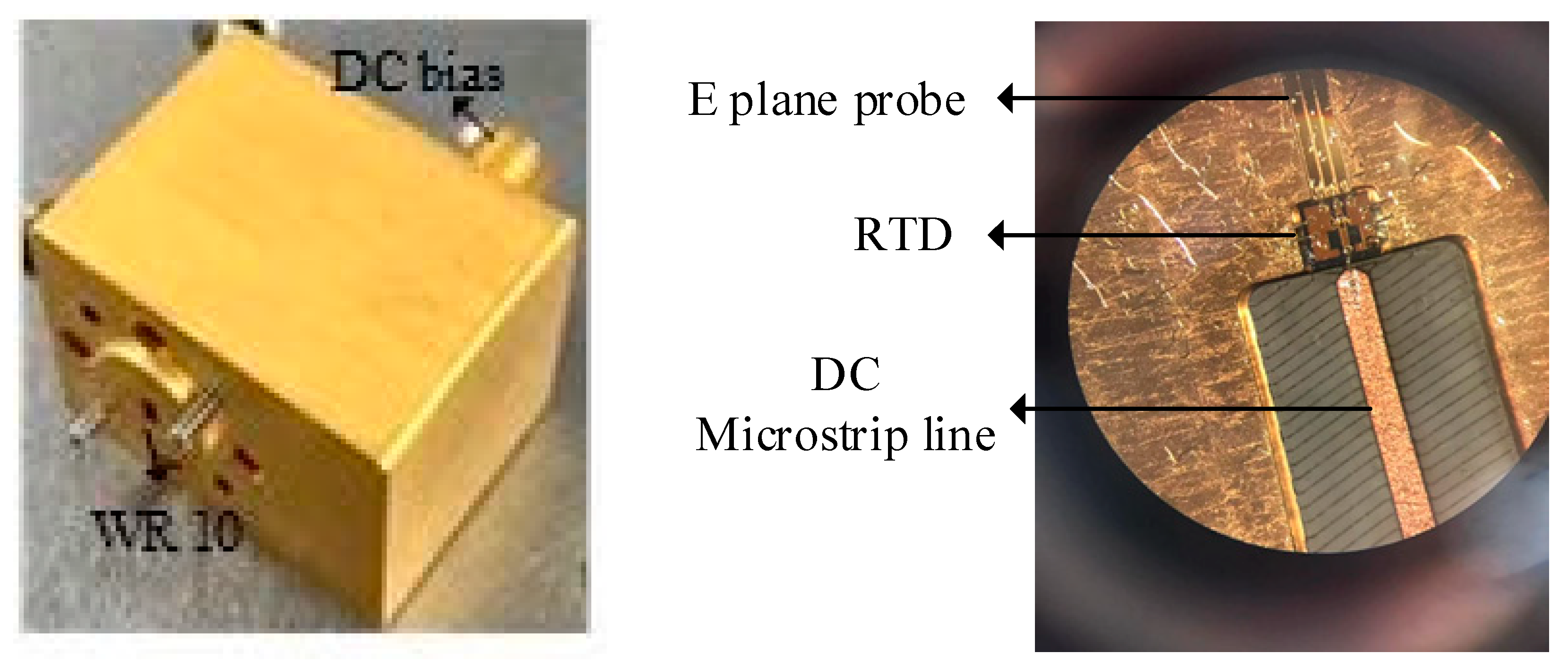

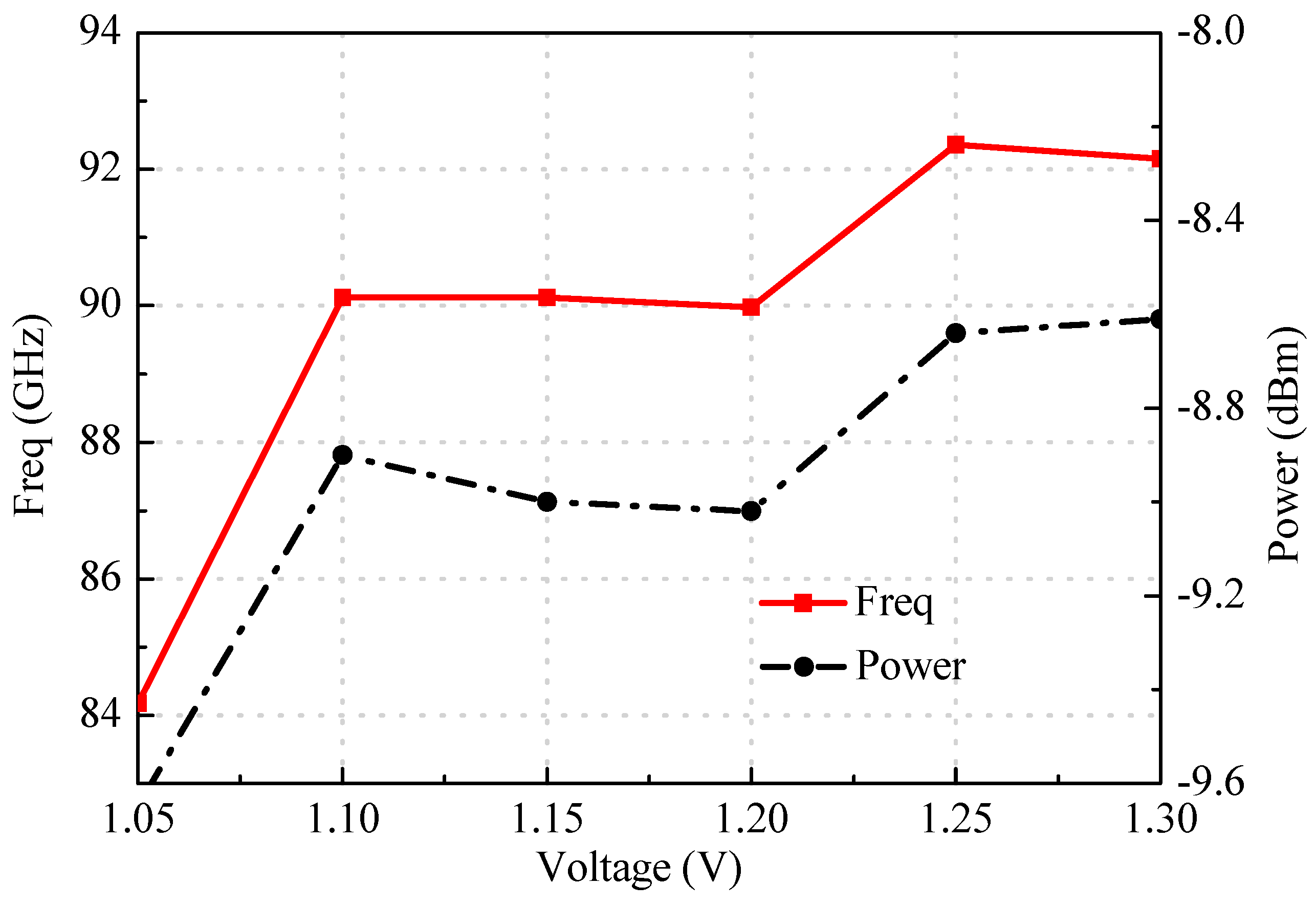
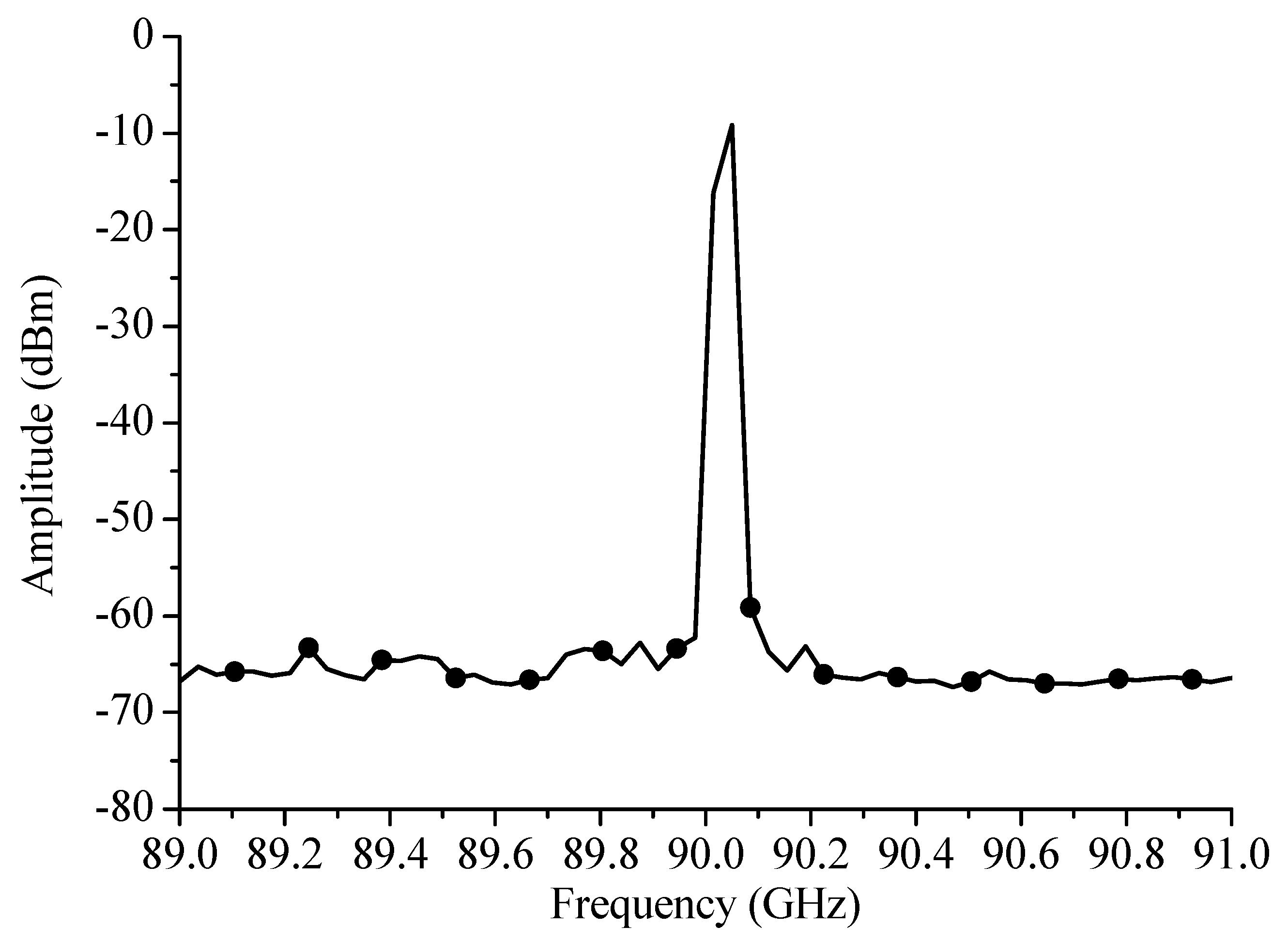




| Parameter | A | B | ls | ws | rs | la |
|---|---|---|---|---|---|---|
| value (mm) | 2.54 | 1.27 | 0.73 | 0.36 | 0.3 | 0.7 |
| parameter | d | w | g | h | r1 | r2 |
| value (mm) | 0.66 | 0.06 | 0.04 | 0.127 | 1.6 | 2.9 |
© 2020 by the authors. Licensee MDPI, Basel, Switzerland. This article is an open access article distributed under the terms and conditions of the Creative Commons Attribution (CC BY) license (http://creativecommons.org/licenses/by/4.0/).
Share and Cite
Wang, C.; Yao, Y.; Jiang, H.; Xiu, T.; Syedd, M.A.S.; Yu, J.; Chen, X. Highly Integrated Resonant Tunneling Diode with Rectangular Waveguide Output for W-Band Communication System. Electronics 2020, 9, 485. https://doi.org/10.3390/electronics9030485
Wang C, Yao Y, Jiang H, Xiu T, Syedd MAS, Yu J, Chen X. Highly Integrated Resonant Tunneling Diode with Rectangular Waveguide Output for W-Band Communication System. Electronics. 2020; 9(3):485. https://doi.org/10.3390/electronics9030485
Chicago/Turabian StyleWang, Caixia, Yuan Yao, Hang Jiang, Tao Xiu, Mohsin A. Shah Syedd, Junsheng Yu, and Xiaodong Chen. 2020. "Highly Integrated Resonant Tunneling Diode with Rectangular Waveguide Output for W-Band Communication System" Electronics 9, no. 3: 485. https://doi.org/10.3390/electronics9030485
APA StyleWang, C., Yao, Y., Jiang, H., Xiu, T., Syedd, M. A. S., Yu, J., & Chen, X. (2020). Highly Integrated Resonant Tunneling Diode with Rectangular Waveguide Output for W-Band Communication System. Electronics, 9(3), 485. https://doi.org/10.3390/electronics9030485






